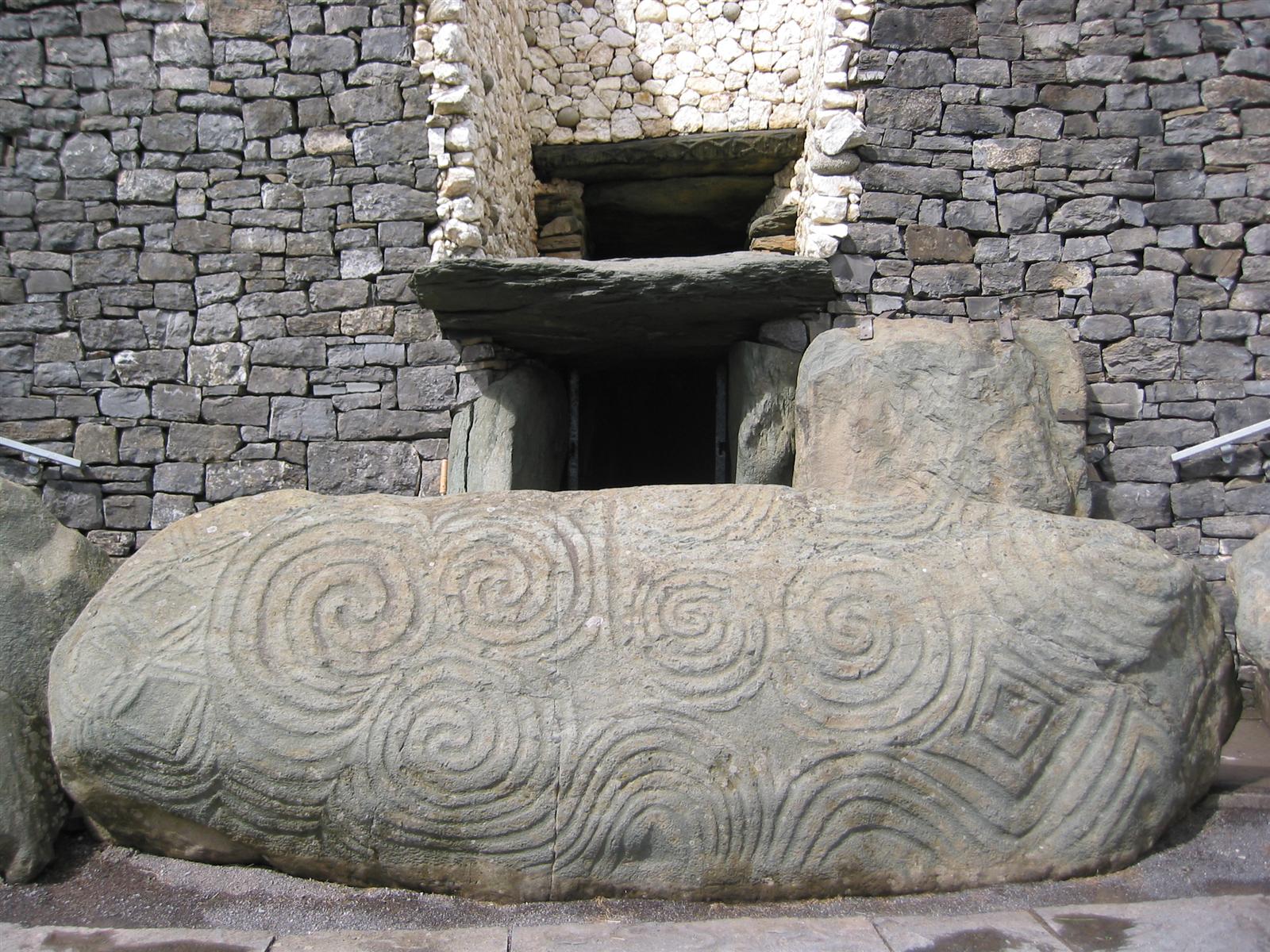
The entrance to the neolithic tomb of Newgrange in Ireland, which is older than Stonehenge and the Great Pyramid of Giza in Egypt.
The triple spirals found in much Celtic art and at many Celtic monuments, such as the Newgrange tomb, are thought to represent fertility (the nine months of human pregnancy), the past-present-future, the realms of land-sea-sky, or the goddess Brigid (celebrated at the beginning of spring).
Fetrility and the passage of time are deeply embedded in the celebration of the New Year, especially when the vernal equinox was observed as New Year’s Day. (January 1 became the New Year’s Day gradually. Regions of Denmark were the first to make the change in the 1100s and the British Empire was the last, in 1752.) We still number the months as if New Year’s Day fell during March: SEPTember is the seventh month, OCTober is eighth, NOVember is ninth, and DECember is the tenth. New Year’s also marked the beginning of “lent,” the Anglo-Saxon word for “Springtime.”
To promote fertility on the springtime New Year, the pomegranate can be put to many uses. It seeds can be eaten to increase fertility and its skin, dried, can be burned as an incense to attract wealth. A branch of pomegranate can also be used as a “dowsing rod” to locate buried or hidden treasures. Daffodil, one of the flowers most associated with March, can also be used to increase fertility. To attain immortality and overcome the passage of time, eat apples or carry charms made of apple wood. Linden leaves and sage can also be used to lengthen life or achieve immortality.

Newgrange isn’t Celtic, it predates Celtic culture by about 2500 years. The triple spiral was certainly used frequently in Celtic art (and certain other cultures) although whether it formed part of a continuing artistic tradition is impossible to say.